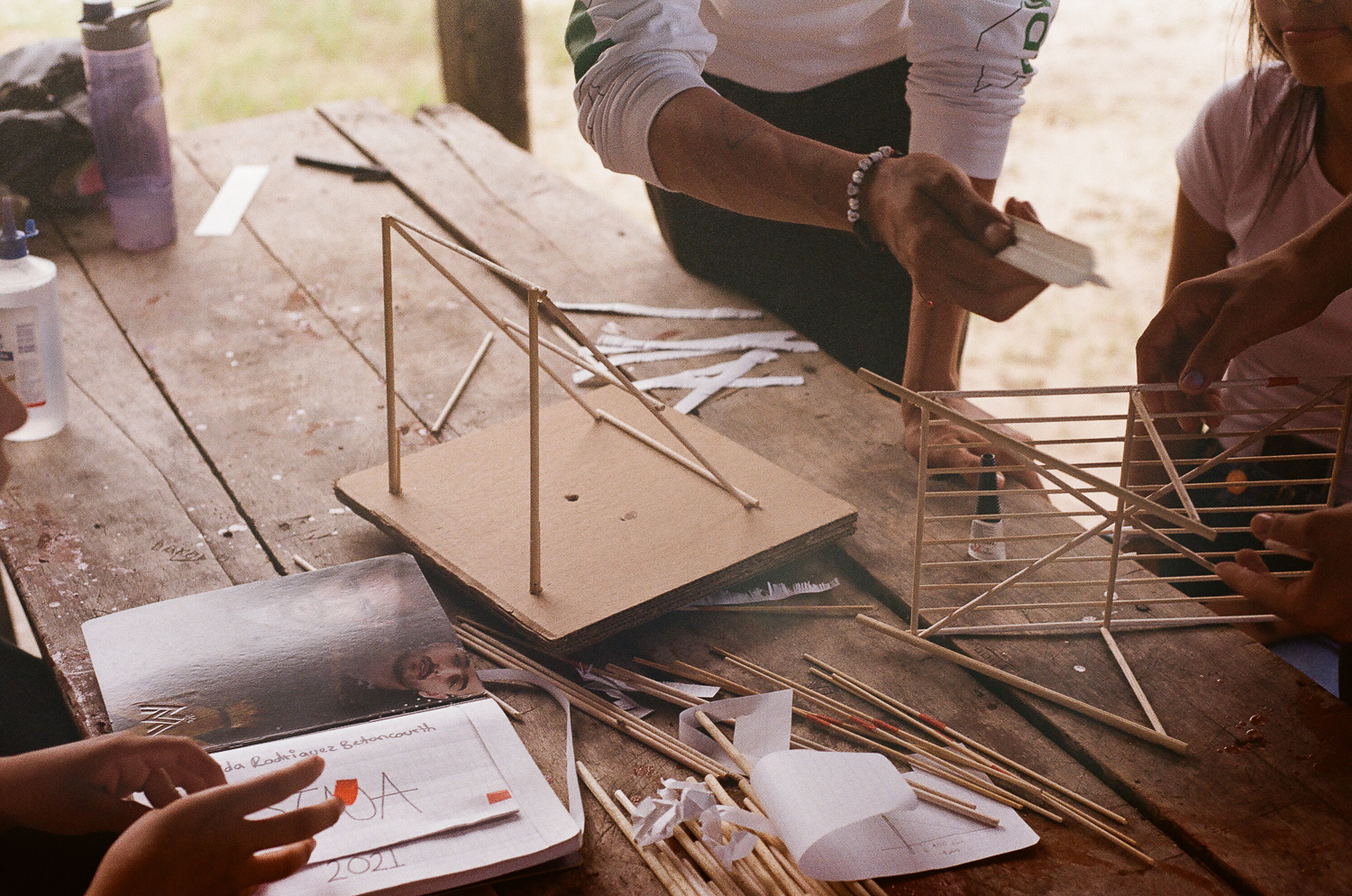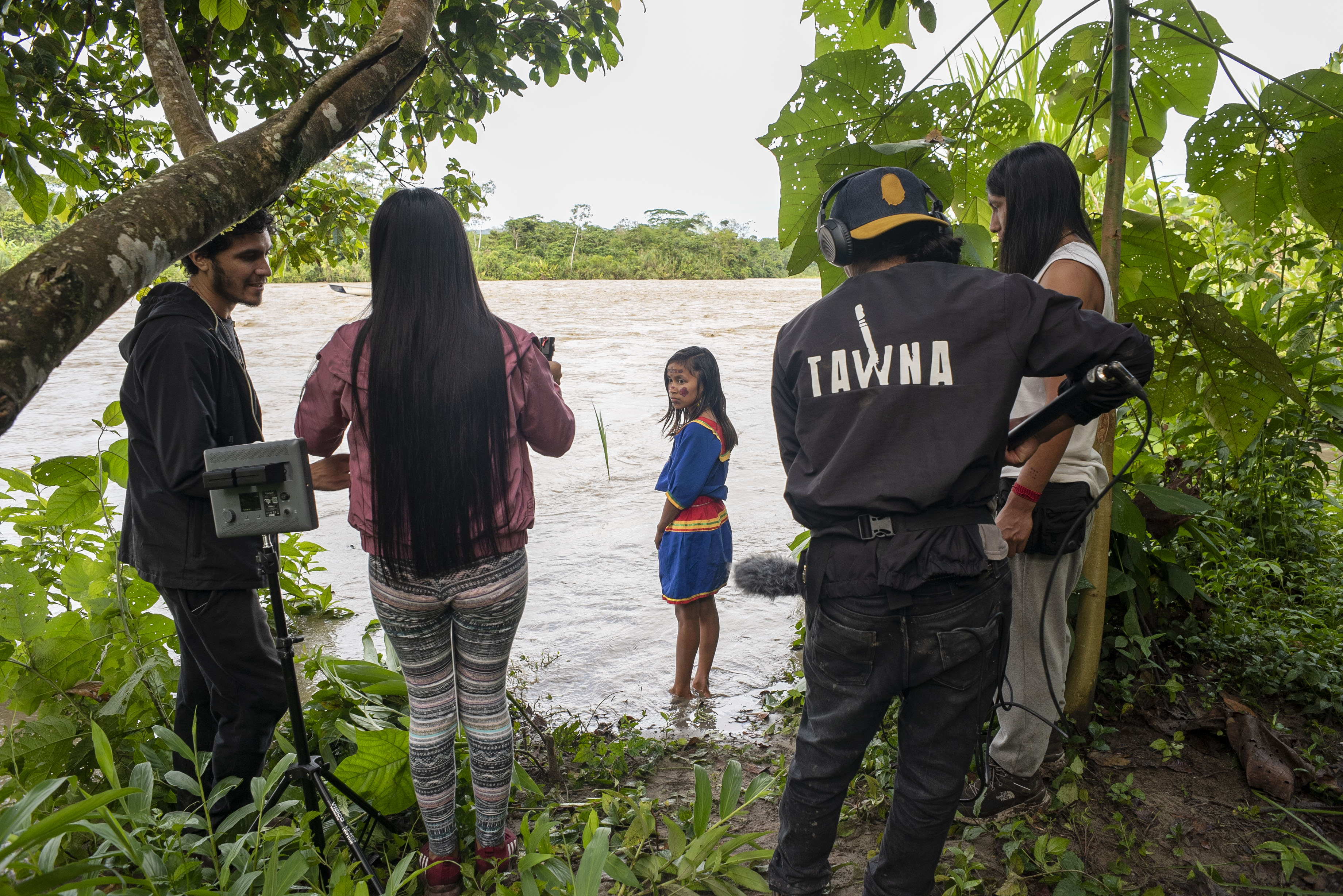Our school is like the body of the Yanomamɨ. It wears some clothes of the napё [non-indigenous] people, it wears some things of the napё people, but it has a Yanomamɨ thought. It has eyes to see the true way. Our school looks for good things and also looks to the front of the pathway because it doesn't want to let bad things come close. The Differentiated School has its head to think as Yanomamɨ think and to know the thinking of the napё. It has its own thinking, it does not want to imitate the thinking of the napё. It wants to remain within the Yanomamɨ thought. It participates in the feast and when there is no feast it continues to teach other things. It participates in everything that happens in the life of the Yanomamɨ people. It has its hands to work and to fight. It has ears to hear the stories of the ancestors and also to hear the stories of the napё. It has a nose to breathe. It has strong legs to walk far and on difficult roads. The school, as well as the Yanomamɨ, has a body and needs to be well-fed in order to be happy. The school, like the Yanomamɨ, has a soul and has thought. The school, like the Yanomamɨ, is willing to work so that all may live well and be happy. The school is Yanomamɨ.
"The School, like the Yanomami, Has a Body and Needs to Be Well Fed to Be Happy"
Leia este artigo em português aqui.
As much as the school, architecture itself also served colonialism as a civilizing instrument, so, together with the Yanomami people, we were incited to think about how we could make it serve the interests of the communities.
Among the Yanomami, schools arrived in the 1950s with the first missionaries who invaded the Indigenous territory and implanted their first missions. This was the case in the region of the Marauiá River (Amazonas, Brazil) with the arrival of the Salesians of Don Bosco. Among the communities of the region, which had very little contact with non-indigenous people, rumors reached the ears of the Yanomami: "The whites are coming, bringing school, mission, and health."
But who were these outsiders (napë), and what were school, mission, and health? What did these words hide and what were the interests behind them?
"We want to know where the danger comes from the whites. The whites leave hidden where the problem is, that's why there is so much danger," Adriano Pukimapɨwëteri Yanomami, leader of the Pukima Cachoeira community, once told us. These new and abstract terms were constantly translated, transformed, and updated by the Yanomami, according to the political strategies of each group.
After hearing rumors of the arrival of the whites, Adriano's grandfather, a leader at the time, was suspicious of the attacks and the apparent generosity of the missionaries and did not accept them. It was necessary to understand better, and to understand better it was necessary to see up close. Thus it was that they established a relationship of exchange of materials with the missionaries, and Adriano, already grown up, was willing to participate in the classes at the Salesian mission. As a leader, it was necessary to take the front line, experience the situation that presented itself and understand the hidden dangers.
After the experience of the Salesian schooling and understanding what were the interests of the missionaries—the prohibition of the Yanomami culture and language to colonize them—Adriano left the school and began to look for another way for schooling that would strengthen the Yanomami culture and could form the young people politically so that they could fight for their rights. Since then, different schools run by the indigenous themselves have become a key element in the political demands of the Yanomami of the Marauiá River. Because to strengthen these schools is to strengthen the struggle for the recognition of their rights, for their autonomy, and for their well-being.
The position of Adriano's grandfather, rejecting the arrival of the Salesians to his community and denying an alliance with the missionaries, opened a path of struggle that his family tirelessly carries until today: that of the production, or invention, of another type of encounter with the non-indigenous (napë), in which they can lead it according to their interests and political strategies, that is, an encounter in which the Yanomami people are the protagonists. Through this strategy undertaken by Adriano and his family to seek an opening towards new encounters, our approach was possible and, in 2016, we began to build an alliance and collaboration that started from the common interest in the construction of the Yanomami schools.
Since the promulgation of the 1988 Constitution of the Federative Republic of Brazil, Indigenous peoples have been legally guaranteed the right to be different from the non-indigenous, that is, to be Indigenous and thus remain, abandoning the vision of native peoples in a transitory state on the road to civilization. With the right to difference, the right to differentiated literacy and also to differentiated buildings for their schools is guaranteed; however, on the other hand, there has been little discussion about their architecture.
As much as the school, architecture itself also served colonialism as a civilizing instrument, so, together with the Yanomami people, we were incited to think about how we could make it serve the interests of the communities. As architects and anthropologists, we thought about how we could help in the spatial translation of ideas and concepts, with the aim of collaborating in the struggle for the right to build properly differentiated schools. From what the Yanomami told us, we could try to understand how they construct meaning and sense around the concept of school, far beyond its architecture.
But how to design a school capable of reflecting the Yanomami logic of struggle and autonomy, instead of reproducing the colonial, civilizing, and missionary logic? Would it be possible to think and build a proper Yanomami school?
The Body of the School
We continue to elaborate on these questions through exchanges, reflections, and conversations with our Yanomami friends. Elaborations and reflections not only conceptual, but mainly empirical, from the production of a bilingual architecture manual for schools, the result of a workshop and meeting with the Yanomami communities of the upper Marauiá River in 2019,1 and the construction of two schools: the Omawë School (2019-2020), in the Pukima Cachoeira community and the Suhirina School (2022-2023), in the Raita Centro community, both in the upper Marauiá River region.
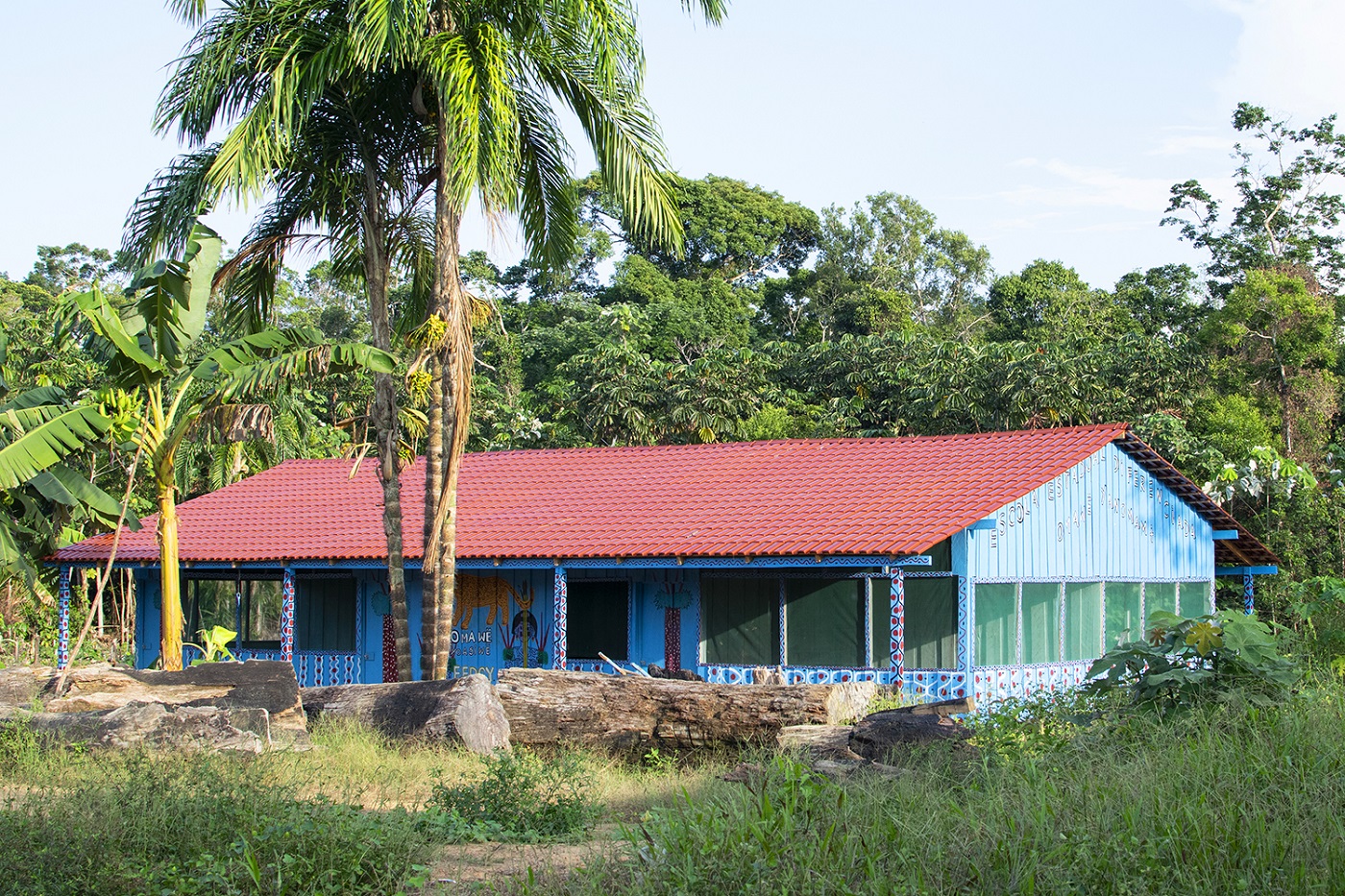


During the construction of the first school, in 2019, we remotely accompanied the carpentry team, who spent about two months cutting the wood in the forest and assembling the structure and the roof. When they returned, we received some photos taken by Carlinhos, the carpenter responsible for the construction. It was a dream come true, literally. And like every dream that comes true, it was different from the dream image. The construction was very well done, just as we had projected it. But it was not a Yanomami school, it still seemed to us a napë (non-indigenous) construction. Soon after Carlinhos returned to the city and sent us those photos, Adriano also went down the Marauiá river to the city of Santa Isabel do Rio Negro and called us.
The first thing he told us was that the school was not ready yet and that, precisely for that reason, he had asked not to send us photos. When we replied saying that we had already seen some pictures, he was a bit disappointed and asked us for one thing: we would have to come back with many colorful paintings. He told us that, after the construction was finished, the community met and together with the elders and shamans said that the school would only be ready when they had painted it with the Yanomami drawings. The construction would become a school when they had given it a Yanomami body. The shamans and the older ones, as well as Adriano, were concerned with the body of the school, in transforming it into a Yanomami school, with a Yanomami body. They were reinforcing what they had already elaborated about their school in 2014, in their Political Pedagogical Plan, even before it was built:
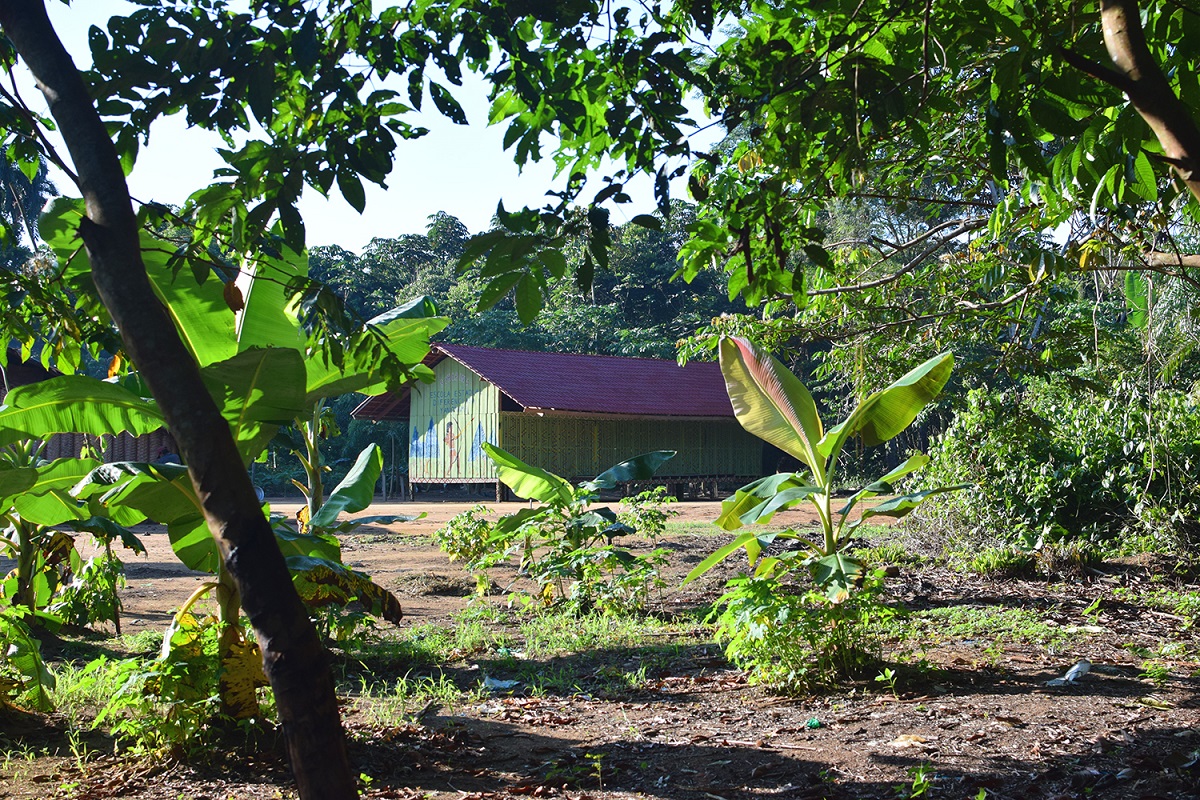


Painting the House of the Spirits
The following year, in 2020, we went up the river to meet Adriano and his family in Pukima Cachoeira, where we organized the collective painting of the school with a group of young people from the village. We didn't know exactly what they had scheduled, but we brought the paints Adriano had requested: blue in large quantities for the background and various colors for the drawings. When we arrived, we presented all the materials to the community and Adriano said that first we should paint the whole school blue. As the days went by, the school and its surroundings took on a new presence. The school took on a body. When we finished the background, we let Adriano know and he told us that now we could meet with the whole community to discuss how to do the drawings in the school, beyond organizing the inauguration party.
The next day we started the meeting. The first topic was Adriano's idea of having a proper Yanomami party for the inauguration of the school, which everyone agreed to develop together. Then the elders and the shamans talked for a long time about what should be painted in the school, sparking a curatorial discussion about how the body of the school would be painted with the Yanomami drawings. They decided that, as the school was differentiated, they should paint the house of the spirits (peimakɨ) on the door of each classroom, as the images of Omawë and Yoasiwë (ancestral demiurges), and other auxiliary spirits (hekura). The school was then painted with graphics, such as the drawings made on the body for the festivities, but also with mythical and shamanic motifs and figures, auxiliary spirits that reinforce its warrior character, and mediation between two worlds. Finally, isn't a school in a village also a space of encounter between these two worlds, Yanomami and non-indigenous? Adriano explained that painting the body of the school, as they paint their bodies, was to bring the spirits into the school and also so that everyone could see that this school is a Yanomami school and not a napë school.
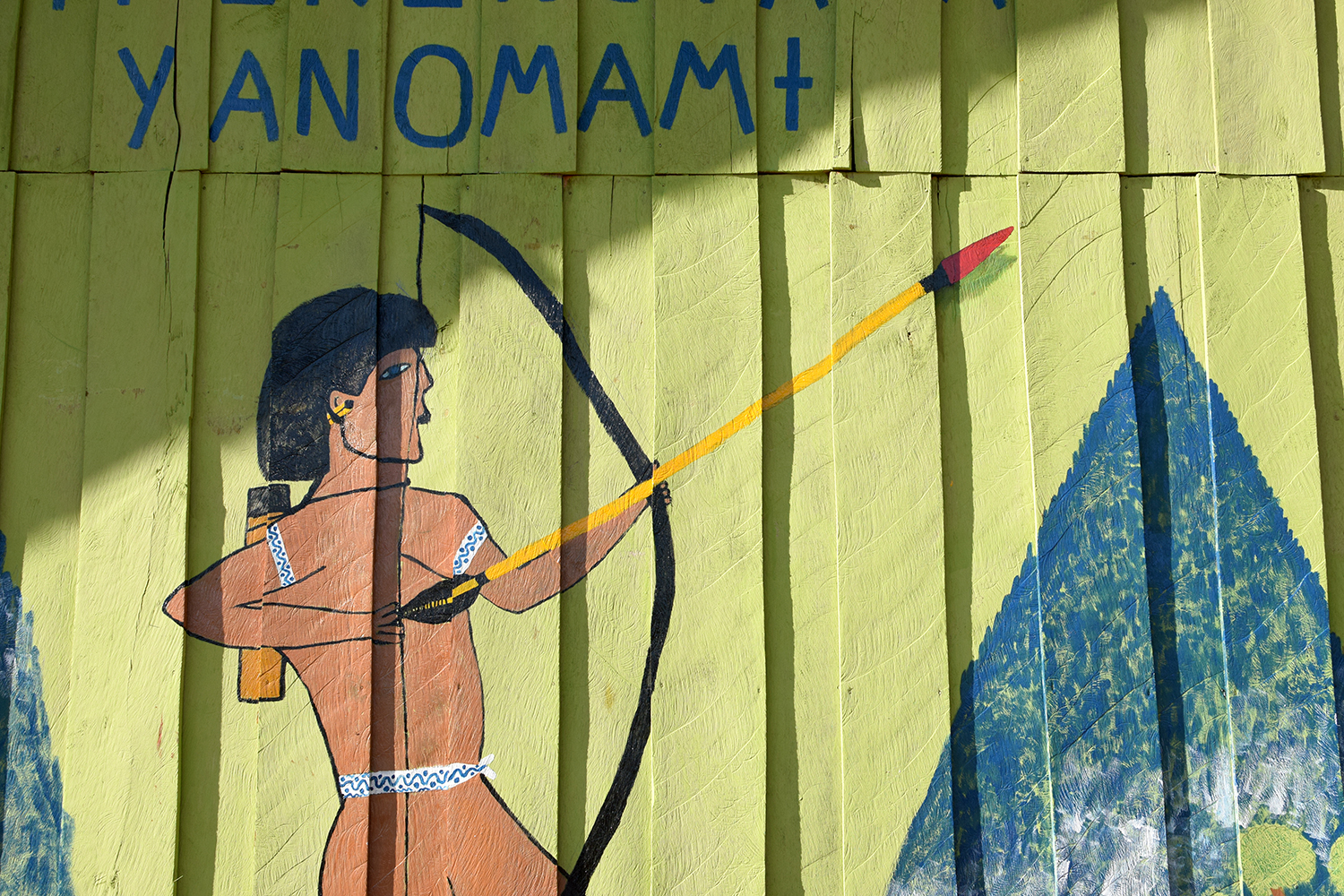
The idea of painting the body of the school to invite the spirits to dwell in it is related to one of the stages of the Yanomami shamanic initiation process, the taamayõu. About this process, Cândido, Adriano's father and a great shaman, tells us that just as for the construction of a school, in the taamayõu, first the shamans
o the cleaning, like the size of the village, so that the spirits can come to the person's body. Then, to become a shaman you have to build a house, like the construction of a school to teach, the house of the one who is going to learn. Whoever wants to learn has to have a big house. On the floor, he has to leave the earth very flat, as if it were the student's bench.
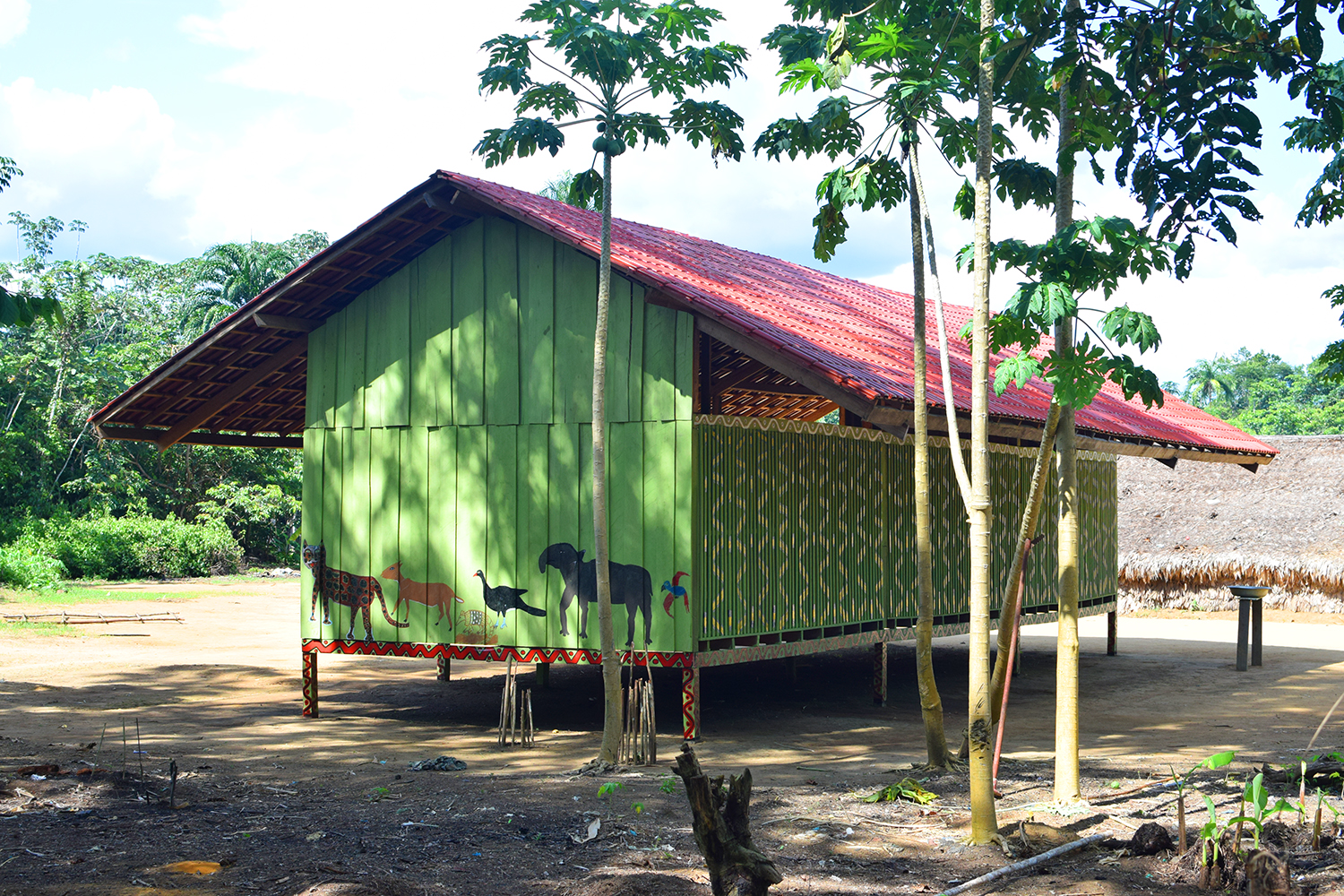


A clearing, in the space-chest of the shaman apprentices, marks the process of construction and transformation of the shaman's body into a house of spirits: "the house of the one who is going to learn." Making an analogy, the clean ground opens space for the school to also receive its new body. A body that, when painted, attracts the assistant spirits who are, at the same time, protectors and teachers.
Shamanic initiation is understood as the quintessential way of being taught. Over several days, the shaman-teacher, as they say, leads the student to direct apprenticeship with the hekura spirits. Through the mediation established by him, the teacher manages the rigorous diet, the blown doses of hallucinogenic epena powder and the very contact with the hekura. The spirits, therefore, transmit to the student their multiple chants and, throughout the process, build their body, their own houses. The body is where the shaman's auxiliary spirits come together, it is through them that knowledge is transmitted and, from the perspective of these spirits, the body is a clearing for the construction of their houses, called hekura pë yahipɨ, "spirit houses."
Shamans have the ability to assume other points of view and explore other dimensions and worlds, making possible compromise, dialogue, negotiation, healing, as well as teaching and learning with the spirits of the forest. In other words, they should play the role of mediators in the relationships between humans, non-humans and spirits in order to produce and maintain the good-living of the community. This being so, we can make an approximation of this ability, of this place of transit between the worlds of the shamans, with the school itself, which, in an analogous way, makes possible a transit between the Yanomami world, in the forest, and the non-indigenous (napë), in the city.
From this perspective, the school, pacified and domesticated, is also that place of connection between worlds, as a space of transit of people and knowledge, where the experience can be made in a less violent, or more controlled way, to the napë universe.
It is from there that one can learn to negotiate and mediate interethnic relations, translating the world of the napë people for the other Yanomami, with the objective of making them minimally understandable and, thus, controllable. Therefore, if the knowledge of the shamans is fundamental for the maintenance of alliances with the various beings that cohabit the forest-land (urihi), the school also becomes fundamental for the mediation of relations with the napë. But not just any school, but a properly Yanomami school: with "eyes to see the right path" and head "to think as Yanomamɨ think and to know the napë thought."
